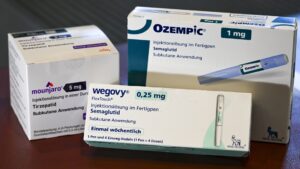The Economic Impact of GLP-1 Medications: A Closer Look at Diabetes and Weight Loss Drugs
The recent surge in popularity of GLP-1 medications, particularly Mounjaro, Ozempic, and Wegovy, has made waves in the healthcare sector, particularly for large employers grappling with rising healthcare costs. At Extreme Investor Network, we aim to provide you with the latest insights to help navigate this evolving landscape.
The Costs and Benefits of GLP-1 Medications
As the demand for these diabetes and weight loss drugs skyrockets, employers confront a complex scenario: balancing short-term expenses against long-term benefits. While the list price of GLP-1s exceeds $1,000 per dose, analysts from Aon suggest that the overall investment may yield substantial returns in improved employee health.
Greg Case, CEO of Aon, indicates that employers are witnessing remarkable reductions in serious health issues among workers using these medications. For instance, there’s been a reported 44% decrease in major cardiovascular events and significant reductions in conditions like osteoporosis and pneumonia.
Analyzing Medical Claims Data
A recent Aon study examined medical claims data from 139,000 U.S. workers on GLP-1s between 2022 and 2024. Initial findings showed that while these patients typically incur higher costs during the first year due to more frequent doctor visits for monitoring and related conditions like sleep apnea, the scenario shifted significantly in the long run.
By the end of the second year, those on GLP-1s experienced a 7% reduction in the growth rate of medical costs, compared to a 14% increase among similar workers not using these drugs. This suggests that while early expenditures may be daunting, they lead to long-term savings by mitigating severe health issues.
Key Findings
-
Heart Health: GLP-1 usage has been correlated with a more than 40% decline in major adverse cardiac events like heart attacks and strokes.
-
Diabetes Management: There is a marked reduction in the onset of Type 2 diabetes among those using these drugs, further alleviating future costs for employers.
- Cost Savings Timeline: Employers can expect a clearer return on investment over time, with the data indicating a downward trend in medical expenses tied to the health improvements of employees.
Real-Life Applications: Aon’s Initiatives
In response to these insights, Aon is taking proactive measures by launching a subsidized GLP-1 weight management program for its workforce. This initiative includes weekly virtual wellness visits and home blood tests, reinforcing the importance of adherence to the medication regimen.
Building a Healthier Workforce
With healthcare costs constantly on the rise, employers must prioritize health initiatives that not only support employee wellness but also yield economic benefits. Aon’s findings reveal that investing in GLP-1 medications may be one of the most effective strategies to accomplish both goals.
Conclusion: A Strategic Investment
At Extreme Investor Network, we understand that the landscape of employer-sponsored healthcare is evolving rapidly. Workers suffering from obesity and associated health problems can significantly benefit from GLP-1 medications. As this sector continues to develop, staying informed will be crucial for both employers and employees alike.
Keep engaging with us for expert insights and updates on how these changes may impact your organization and bottom line. Let’s navigate the future of health and wellness investment together!

